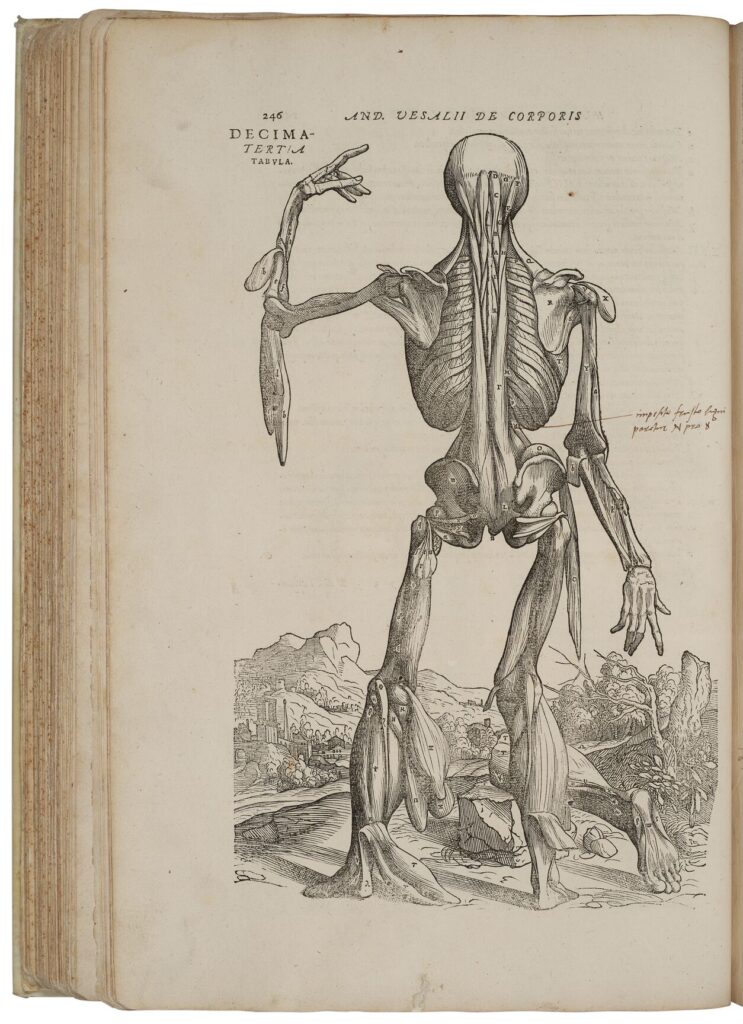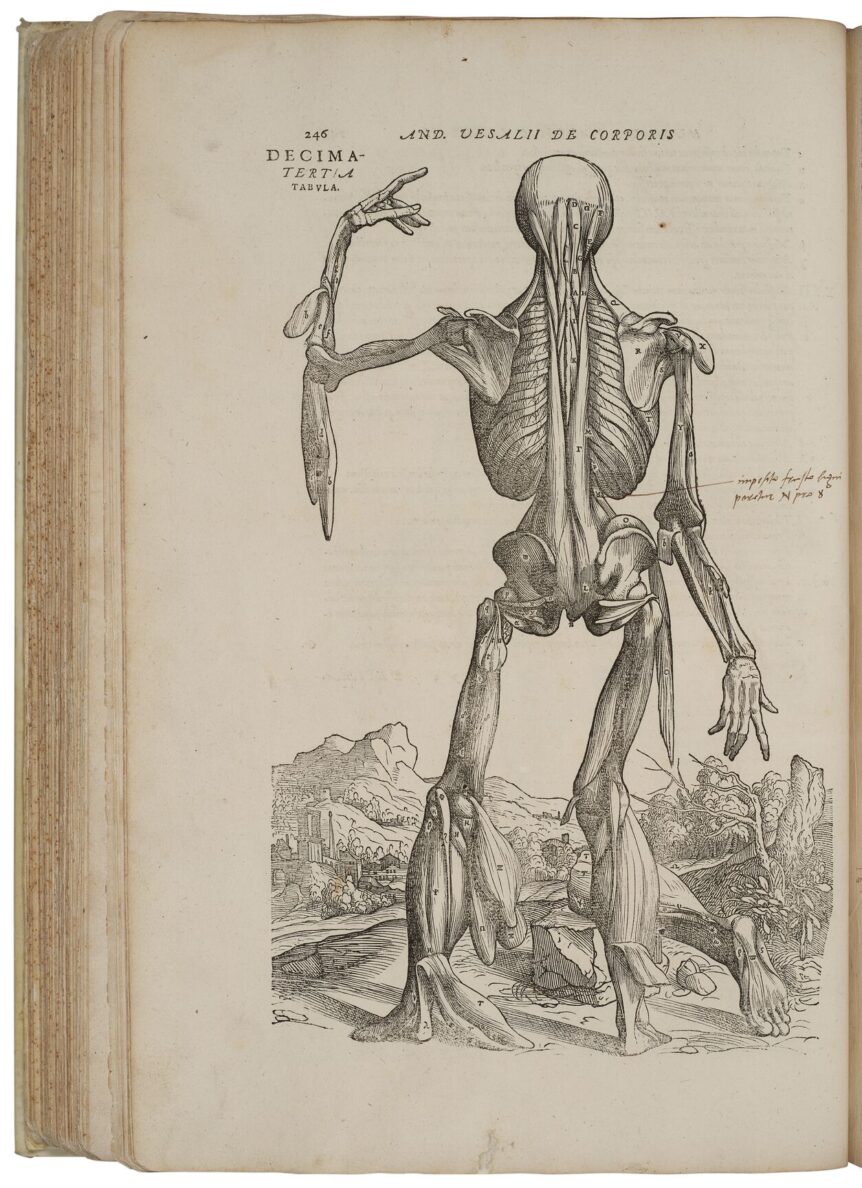
In 1543 Flemish anatomist Andreas Vesalius published a seven-part book that would become the foundational text of modern anatomy: On the Fabric of the Human Body. With it, Vesalius overturned more than a millennium’s worth of medical dogma, many of his breakthroughs coming while dissecting human cadavers—a method of study unavailable to most physicians of classical antiquity. Part education and part art, Vesalius’s illustrated anatomy is as respected today for its woodcut specimen drawings—flayed “muscle men” and skeletons who pose like figures from medieval paintings—as for its no-nonsense organization . . . and it might have been even better. In this week’s episode of our podcast Curious Objects, host Benjamin Miller speaks with Rhiannon Knol, specialist at Christie’s, which is currently offering Vesalius’s own annotated copy of his book’s second edition. Its margins dark with suggestions—in Latin—for transposition, rephrasing, and new contextual information, this fascinating document of medical history hints at what a third edition would have offered, if not for Vesalius’s untimely death in 1564.

Rhiannon Knol is a continental book specialist in the books and manuscripts department at Christie’s New York, where she is part of a team that sources, catalogues, and offers for sale at auction some of the most remarkable and important books on the market. She is passionate about the relationship between the materiality of early books and their contents as well as between owners and their books, and is especially interested in the transmission of the classical tradition and Renaissance history of science. In 2016–2017 Knol was an assistant curator of the exhibition The Art of Alchemy / Alchemie. Die Grosse Kunst at the Getty Research Institute in Los Angeles and Staatliche Museen zu Berlin.

